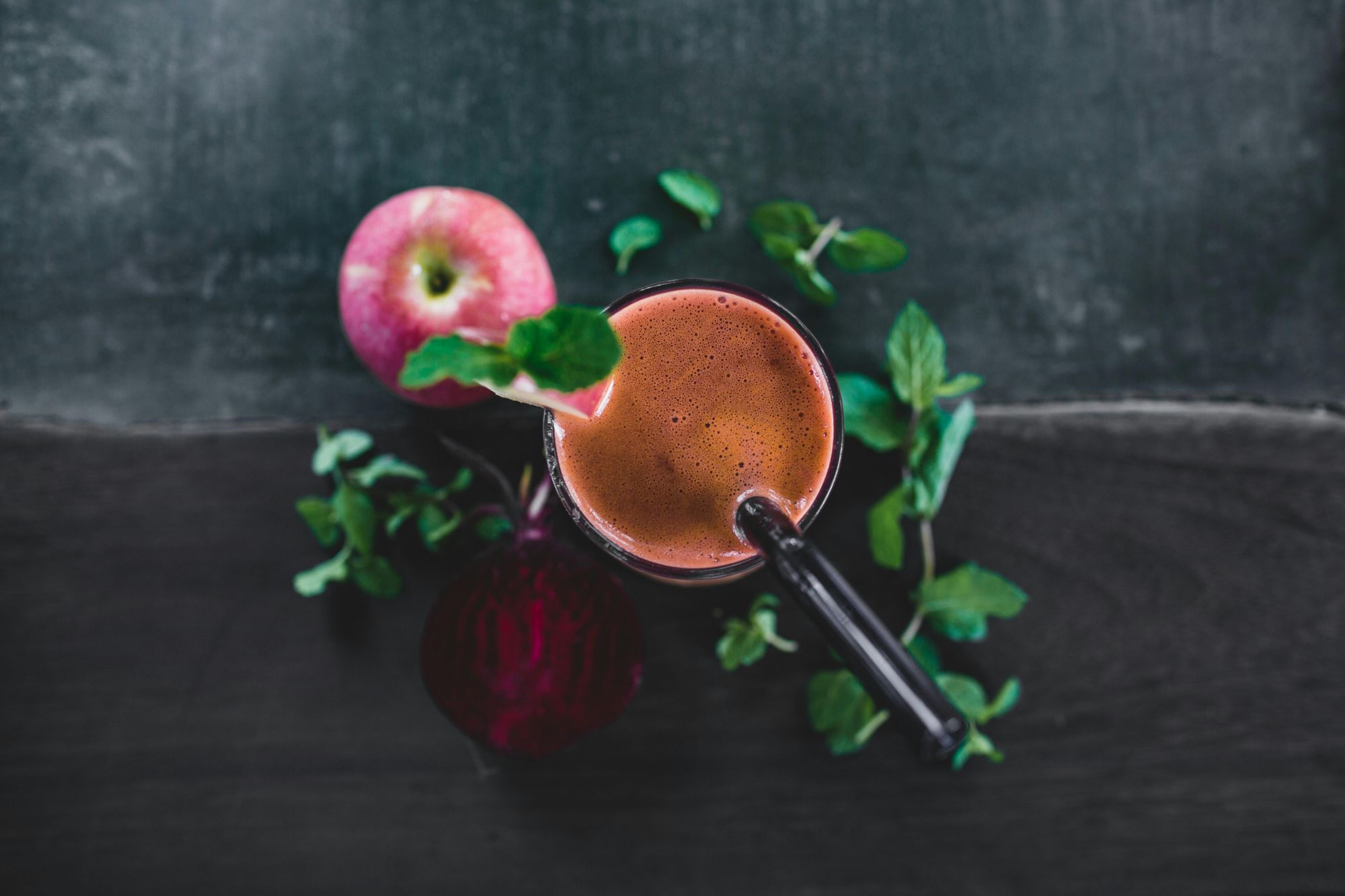Meal Replacement Shakes For Weight Loss: A Good Idea?
Meal replacement shakes seem like they're *all that*. They eliminate the need for meal prep, are cheap, and, um, promote weight loss? (Do they?)

As much as you want it, weight loss is a chore. A colossal pain in the ass. Or, at least, the nutrition side of it is (because, hey, I think we can all agree — we Love, with a capital “L”, going to the gym).
Even if you’re not counting your calories, you must at least be eyeballing those portions, monitoring your weight, and tweaking your intake accordingly.
And unless you’re flush with cash*, meal prep is practically the only way to meet your daily protein and fiber intake requirements.
*So you can afford healthy options when eating out or, idk, maybe a personal chef? 🤷♀️
Right? That’s where meal replacement shakes shake into enter the picture, and say, “You better think again!”
What are meal replacement shakes?
Meal replacement shakes are exactly what they sound like; they’re designed to replace your meals (i.e., breakfast, lunch, dinner).
They’re formulated to provide:
- The nutrition of a full meal (macronutrients + micronutrients) but
- At a lower calorie content (anywhere between 150 to 400 calories)
For reference, for the average 2,000-calorie diet, nutrition experts estimate that your calorie breakdown would look like this:
Lunch and dinner: 500 to 700 each
Snacks: 200
So, basically, meal replacement shakes promise an easy, breezy, effortless way to cut down on your calorie intake without the hassle of meal-prepping or worrying that you’re missing out on crucial nutrients (which would seriously mess up your health).
Better still, they’re often pretty cheap.
For example, Huel Powder costs $2.21/meal. Each serving of their Mint Chocolate flavor packs 400 calories, 49 grams of carbohydrates, 30 grams of protein, 12 grams of fat, 10 grams of dietary fiber, and an impressive list of vitamins and minerals (ranging between 15% and 78% of your % DV).
$2.21! That’s not even enough to buy you a single slab of the cheapest chicken breasts from Walmart.
Uh, an important disclaimer: this is NOT a sponsored post. We’re in no way affiliated with Huel. We just wanted to make a point.
Also, this seems like a good time to tell you that Huel says its products are not meal replacements — but come on. Really? In our honest opinion, it’s a matter of potato, potahto, and everyone else seems to agree.
Do meal replacement shakes work for weight loss?
Alright. At this point, meal replacement shakes might be sounding plenty fine to you right now, but don’t forget that we haven’t said anything about them actually working for weight loss.
So. Do they?
According to this 2003 meta-analysis published in the International Journey of Obesity and Related Metabolic Disorders, yes.
After analyzing 6 studies, the researchers found that participants prescribed the partial meal replacement (PMR) plan lost an additional 2.43 kg than those on the conventional reduced-calorie diet (RCD) plan at the 1-year mark.
In case you’re wondering, the prescribed calorie intake was the same for both groups: 800 to 1,600 calories.
But! Before you get way too excited about the ~possibilites~and ~time freedom~ meal replacement shakes offer you, it’s probably best to temper your enthusiasm.
Why the cautiousness?
Now, think about it. What drives weight loss? Yep, you got it: a calorie deficit.
We can’t be entirely sure, but is it possible that those on the conventional reduced-calorie diet ended up eating more calories than those on the PMR plan? Because, you know, accurately tracking calories is so notoriously difficult — which means they might have underestimated their intake?
While those on the PMR plan just had an easier time actually sticking to the prescribed calorie intake?
Of course.
This would explain why those in the latter group lost more weight than those in the former.
Ultimately, there’s nothing magical about meal replacement shakes.
They just make it easier for you to eat fewer calories.
“OK, sure, but this means meal replacement shakes help people eat fewer calories — they’re ultimately helpful!”
We hear you. And to be clear, we’re not discounting that particular benefit of meal replacement shakes. We’re just questioning the sustainability of it all. How long are you willing to rely on meal replacement shakes?
Sure, “Strawberry”, “Vanilla”, “Creamy Chocolate”, and “Banana” sound like great flavors, but how long would it take before you begin craving solid food (texture!) across your meals?
Only you can answer those questions.
How to use meal replacement shakes responsibly
Once again, we’re not saying, “Don’t use meal replacement shakes.”
What we’re saying is that you need to be a little more mindful about the way you use them. What we’d recommend is incorporating them into your diet alongside healthy nutritional changes.
For example, if you’re swapping lunch for a meal replacement shake, prioritize whole, minimally processed foods for breakfast and lunch. This will set you up for long-term success even after you stop using meal replacement shakes.
And yes, on that note, you should ideally think about your “exit plan”.
Give yourself a set time limit for how long you’ll be on meal replacements (ideally, < 12 weeks).
Of course, remember to stay physically active throughout the whole process. This shouldn’t be a problem for you, though, seeing as how we agreed on Loving the gym 🤪. Also, remember what cardio can and cannot do for you; add it to your routine as necessary.
Want new and improved exercise and nutrition plans?
No matter how much you Love the gym, doing the same old workouts day in and day out can feel like drinking the same few flavors of meal replacement shakes for months 🤢.
So, if you’re looking for something new, ✨ exciting ✨, and designed to send your gains game into orbit, try GymStreak.
This AI-powered personal trainer app develops personalized training + nutrition plans according to your fitness goals, lifting experience, and dietary preferences. Try it out now.
Workout Programming + Nutrition Tracking, Off Your Hands
*sigh of relief* We'll guide you through it all — step-by-step. Just download the app, and you'll be making progress toward your dream body like never before.
References
Heymsfield, S. B., et al. “Weight Management Using a Meal Replacement Strategy: Meta and Pooling Analysis from Six Studies.” International Journal of Obesity and Related Metabolic Disorders: Journal of the International Association for the Study of Obesity, vol. 27, no. 5, May 2003, pp. 537–49. PubMed, https://doi.org/10.1038/sj.ijo.0802258.

